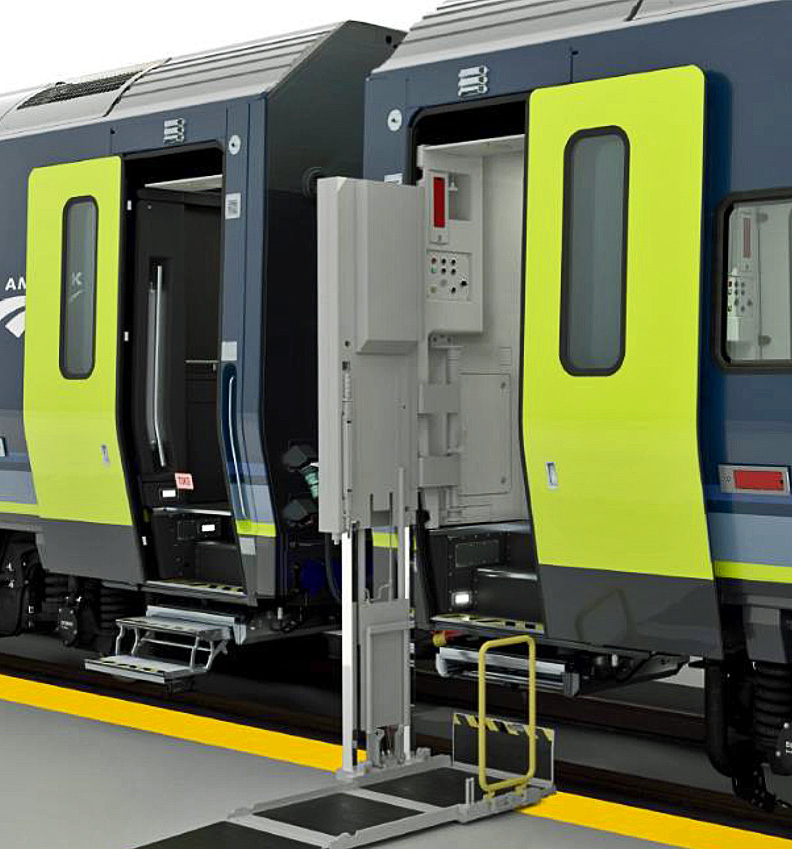Now that the presentations for last week's NGEC Annual Meetings are available (h/t to jrud and jis for finding them), I wanted to post a couple of images from
this presentation, which discusses Amtrak fleet acquisitions.
On page 8, the new Amtrak trainsets are mentioned, along with a photo that
might be a preview of new livery, which shows deep blue with two-tone grey below the belt line, separated with a yellow racing stripe and yellow doors.
Whether this is the livery Amtrak has decided upon or whether it's just some concept Siemens threw together, who knows? But it's out there for everyone to see. So, let the critiques begin!
On that same page, there is this illustration which shows how the 6 and 8 car sets will be assembled, as well as the location of wheelchair lifts and ADA seating locations. The livery concept in the photo above is carried over into the trainset illustration-
























































